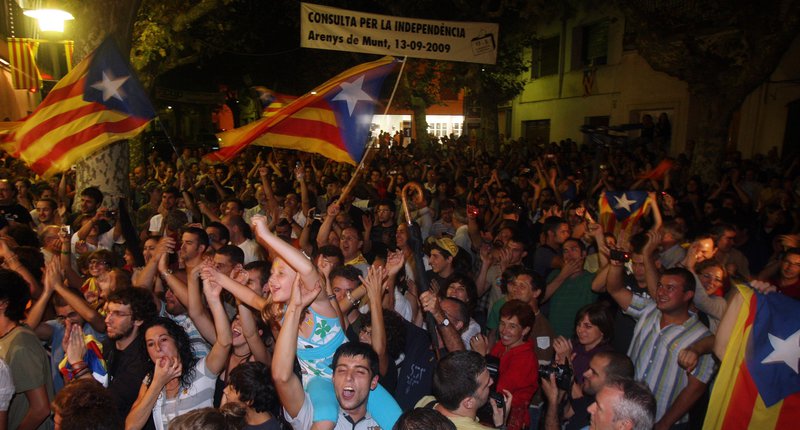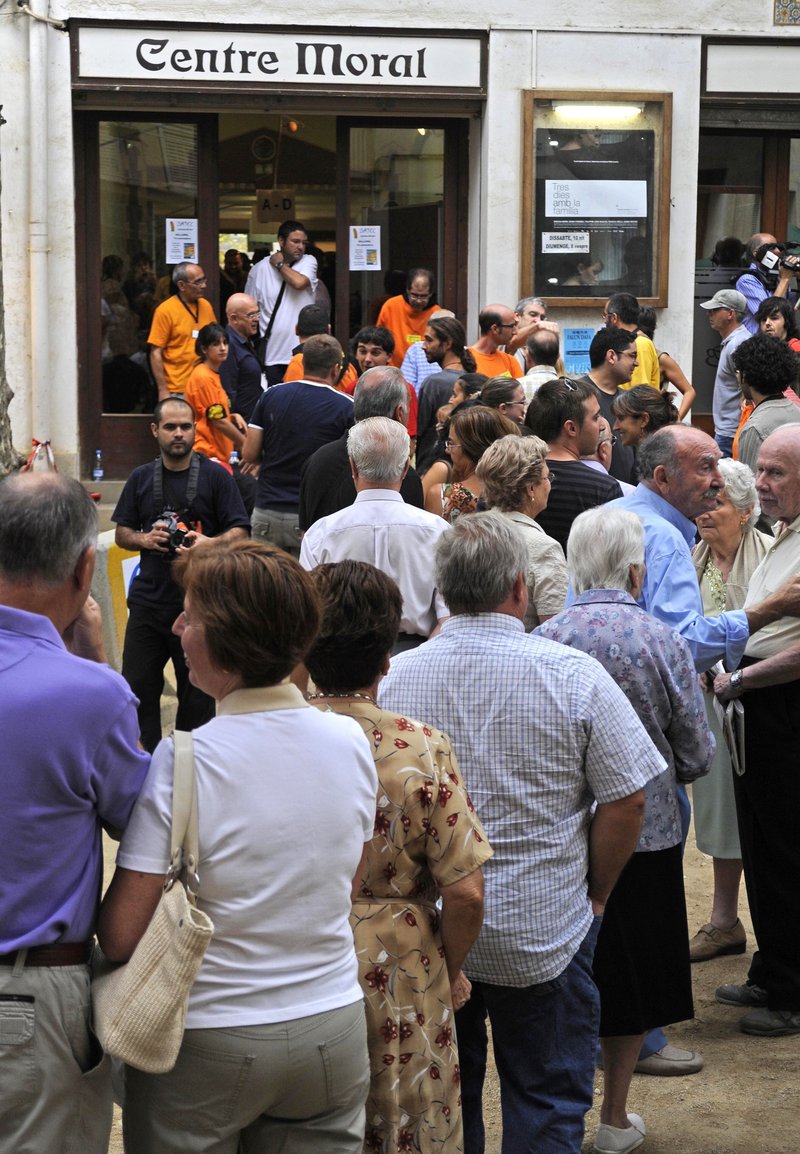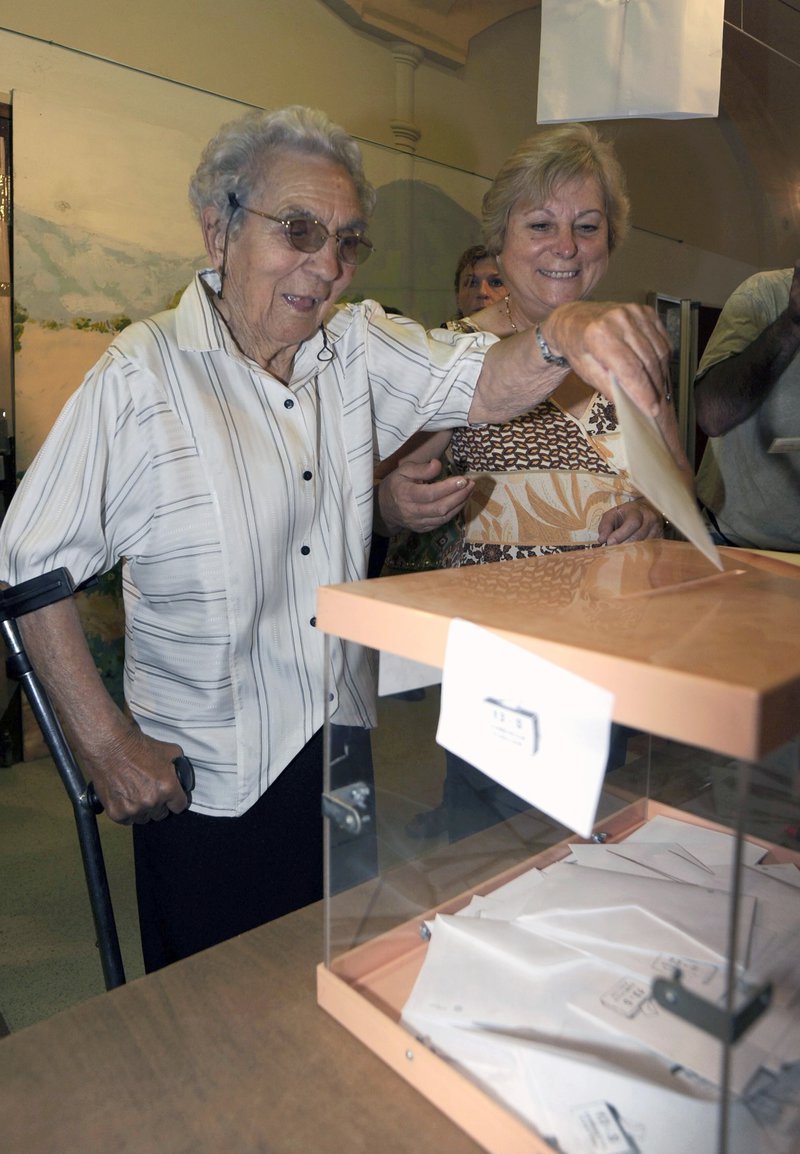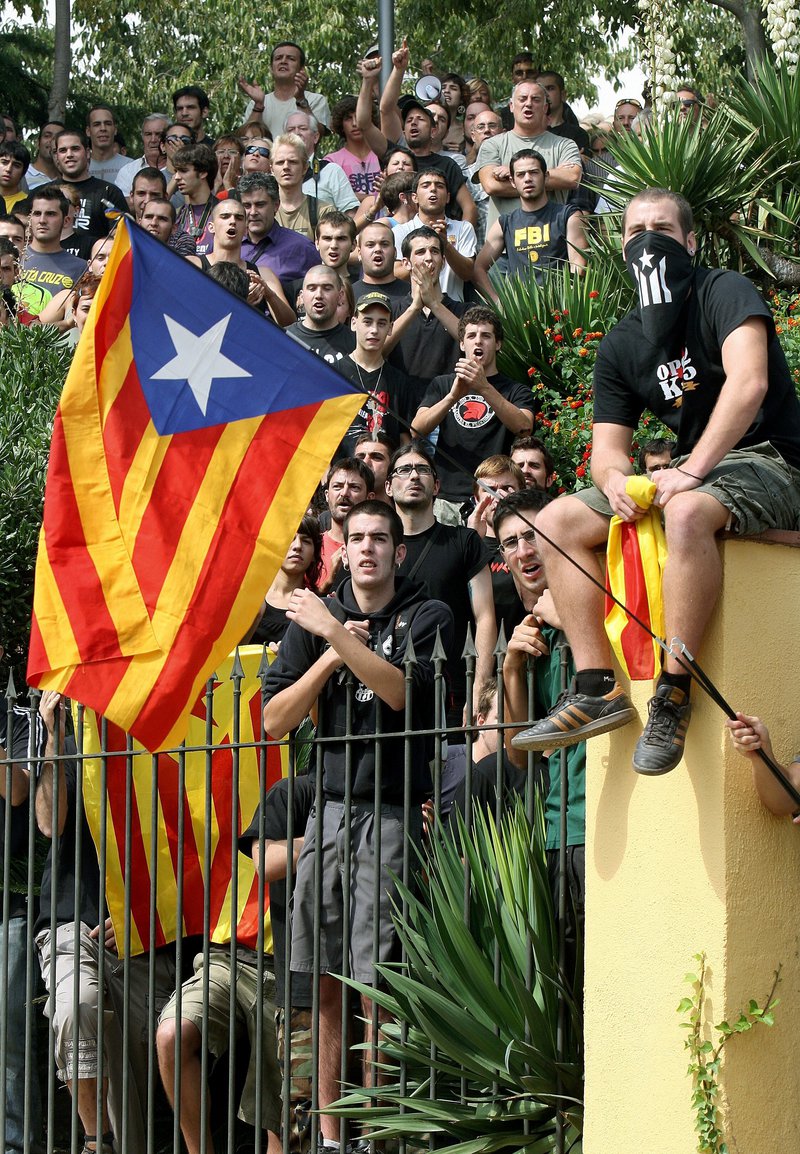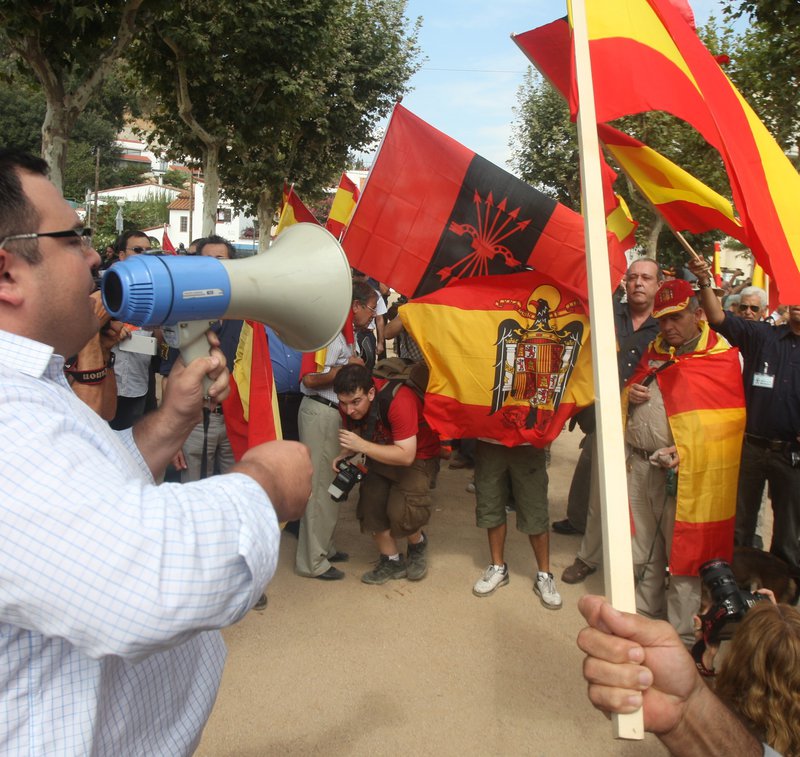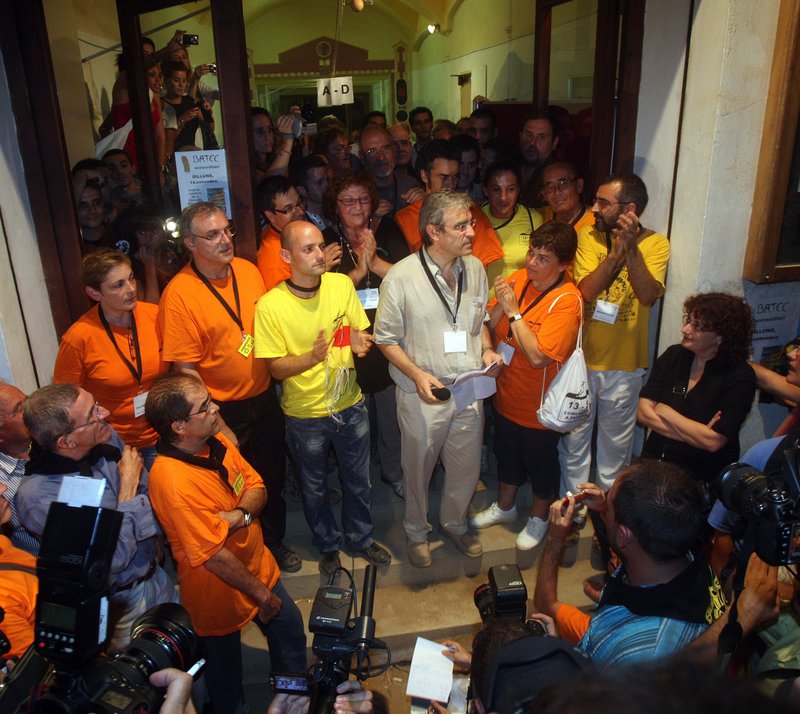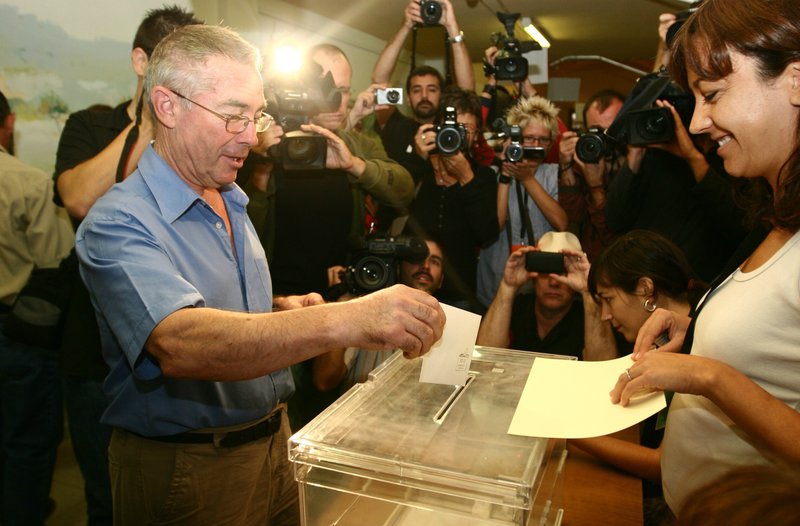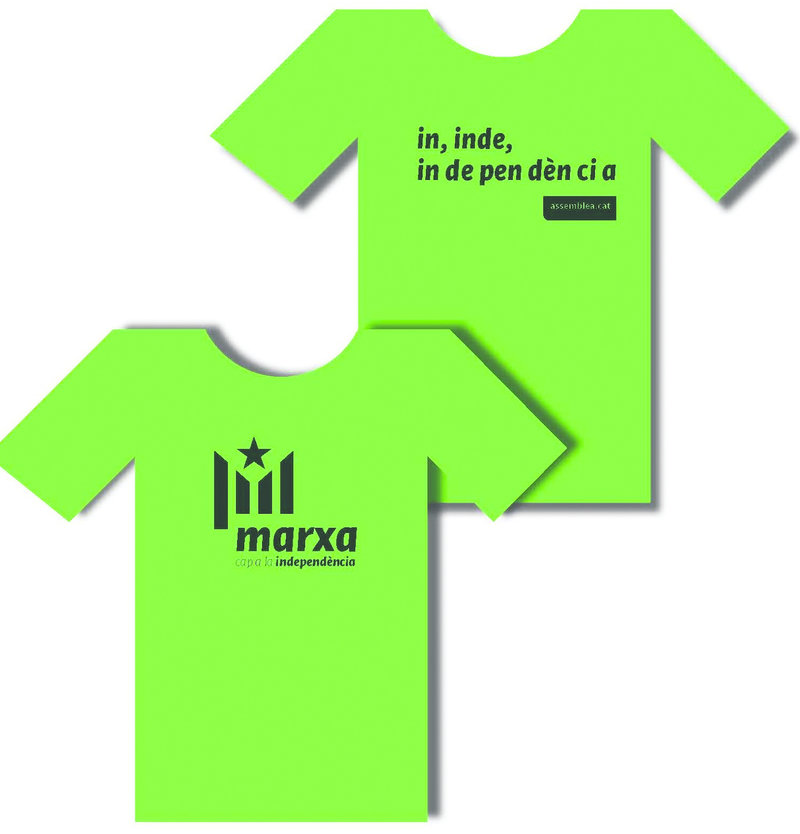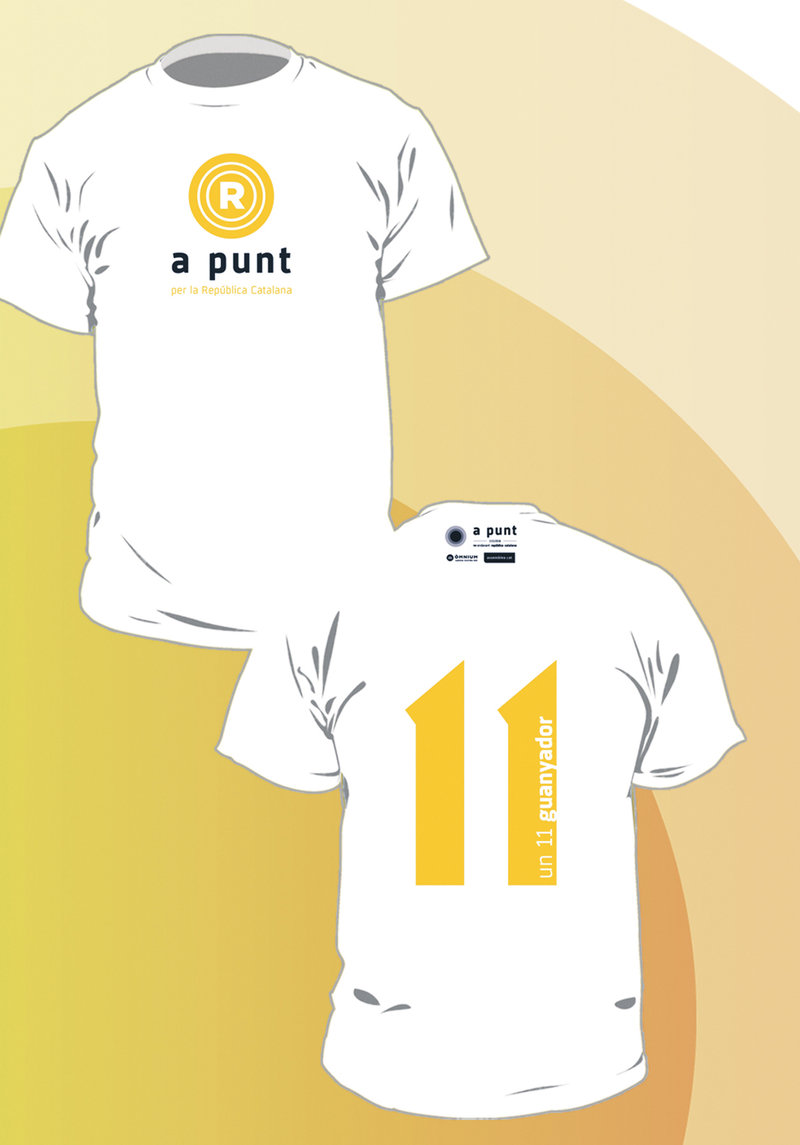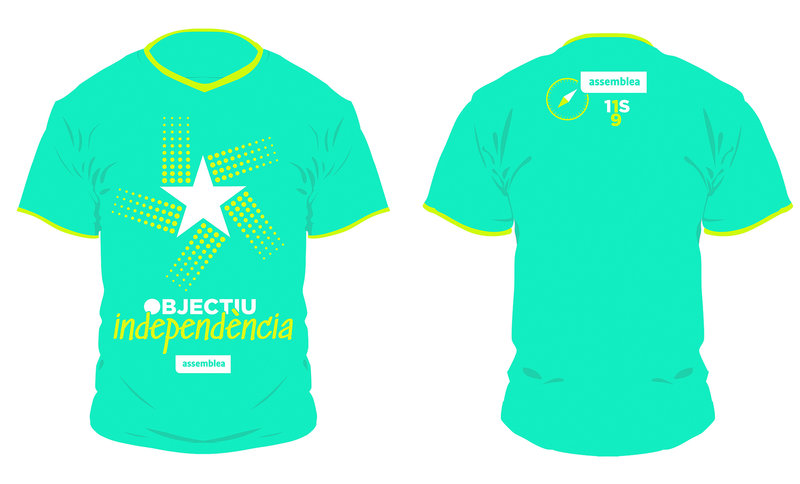2009 - 2019 A decade for independence
On September 13, 2009, the small Maresme town of Arenys de Munt made history by holding a local referendum on the independence of Catalonia. Despite the best efforts of the state authorities to halt and discredit it, the success of the vote turned out to be the spark that led to the current movement demanding the right to self-determination
Before the protest in Brussels in March 2009 or the ruling on the Statute of Autonomy that brought thousands onto the streets in 2010, before the non-binding referendum on November 9, 2014, and well before the unilateral referendum on October 1, 2017, there was one small town where it all began.
On September 13, 2009, Arenys de Munt, a town in Maresme county with just over 8,000 inhabitants, organised the first vote on Catalonia’s independence. Some 2,671 took part out of a potential 6,500 voters, with 96.6% answering yes to the question: Do you agree with Catalonia being an independent, democratic and social state, and part of the European Union? It was the first victory for the independence movement in the face of a state bent on discrediting the vote. Yet, this had the opposite effect and between 2009 and 2011 some 553 Catalan municipalities followed suit.
It took over three intense months to make the vote, known as 13S, a reality, after the local council passed a motion of support on June 4. The motion was presented by the pro-independence CUP party on behalf of the Moviment Arenyenc per a l’Autodeterminació (MAPA), the organiser of the only independence vote to be held anywhere in the country to that point. The driving force behind the initiative was historian Jordi Bilbeny, who points out that the seed for the referendum was planted well before. “It was already out there when we reorganised MAPA in Arenys de Munt, and when with Jordi Colomer we started CUP in the municipality in 2007 we included the proposal for an electoral programme,” says Bilbeny.
As a test case, the organisers set up a council vote on paving over a local waterway, a complex issue that had caused a lot of tension in the town. “We were part of the Salvem la Riera protest group and we looked deeply into the legislation on referendums. In one meeting, one member, Pep Jordana, asked the key question: Now we know the limits laid down by the authorities, why don’t we hold a referendum on independence?” recalls Josep Manel Ximenis, former CUP councillor and coordinator of the Comissió Organitzadora de la Consulta, the commission that organised the vote. That led to a motion for the local council to support the Iniciativa Legislativa Popular (ILP) that the associations behind it wanted to put to parliament to approve a self-determination referendum on September 12, 2010. “In the text and with all the will in the world we subtly included a request for the council to allow MAPA to use the town hall for a vote under the terms in the ILP, but in this case on September 13, 2010,” says Ximenis. The motion was carried with 11 votes in favour and 2 against.
The next step was to promote it in the media, locally and then nationally. “We didn’t have much time and there was a lot of work to do. Parliament’s failure to accept the ILP for debate in June with the excuse that it did not have the powers to decide on Catalonia’s self-determination made holding the referendum in Arenys more relevant,” says the coordinator.
The machinery began to run at full steam. A few days after the motion passed, the organising commission was set up. “It was a body open to all, for people of all types who shared a common objective of guaranteeing the vote’s credibility and, especially, spreading the word,” says commission member, Xavier Mas.
The closeness to summer did not help getting word out in the media, but that did not stop the organisers. “We devoted almost all our time to it because we were aware of the importance of the event going off well,” says Mas. During July the structure of the referendum began to take shape, and among the steps taken was the approval of the vote’s slogan: 13S We begin to Decide, and the logo featuring a ballot box. Posters were hung, the website went up, and even an anthem was created. The organisers also took advantage of the Tour de France, which was to pass through the town, to give the vote more publicity. “We put up a huge Catalan flag over the main road with a banner with the name of Arenys de Munt that was on a lot of TV channels,” says Ximenis.
The role of the Falange
In July, leaflets from the far-right group, the Falange Española, began to appear in letter boxes. The material attacked the vote and tried to discredit the organisers. Graffiti also appeared in the form of targets with the name of CUP or Ximenis. “The aim was clear, they wanted to generate fear among the locals and turn the public against us,” says Ximenis. The campaign by the far-right would not end there, and in August they requested permission from the Catalan authorities to protest outside the town hall on September 13. The council proposed changing the location of the protest, reporting concerns to the police about the protest and the vote taking place together. The authorities gave the Falange permission to demonstrate on September 13 in Plaça Catalunya, later postponing it by a week. That led the group to complain to the high court in Catalonia (TJSC), which allowed the protest on September 13, but away from the voting.
“These incidents with the Falange spurred on many people who were undecided and overcame the fear even though the threat was real,” says Ximenis.
Everything sped up in the weeks leading up to September 13. The initiative got support from public figures, with then president Pasqual Maragall first among them. The Junta Avaluadora de la Consulta was also set up, which had the role of an electoral commission in an election. “The referendum had to have all the guarantees and be scrupulous so as to maintain credibility,” says then MP, Uriel Bertran, who was a member of the commission.
The role of the state
September began with the announcement that the state was challenging the motion passed by the local council in an attempt to halt the vote. The initiative was a headache for then prime minister, Rodríguez Zapatero. A Barcelona court provisionally suspended the approval of the motion, and four days before the vote, the TSJC ruled that the local council could not allow municipal facilities to be used for the vote, while also granting the Falange the right to protest on that day. “An agreement was quickly reached with the Centre Moral to use its premises,” says Ximenis.
On Catalonia’s National Day on September 11, the referendum organisers received widespread support. Bilbeny and Carles Móra headed the march on that day and were the first to address the crowds. “Hearing thousands of people crying “We are all from Arenys de Munt” was a formidable experience and showed us that we had chosen the right way to recover the dignity of the people,” says the historian.
Media interest
Despite the authorities in Madrid dismissing the vote as a local popular event of little importance, September 13 generated a lot of interest in the international media, and more than 300 professionals received accreditation. Arenys de Munt had been put on the map. Correspondent, Gary Gibson, who was preparing a report on the relationship between Catalonia and Spain for the BBC remembers being caught up in the enthusiasm. “Everyone treated it like a party, a celebration of democracy, although that did not stop the voting process being treated with rigorous protocol,” he says.
Voting began at 9am and the queues in front of the Centre Moral began early, showing that the people of Arenys wanted to get involved. Around noon, members of the Falange arrived in a coach, escorted by the Catalan police. They were received by dozens of locals who improvised a casserolada (a protest by banging pots and pans) so that the right-wing spokesman could barely be heard. “There weren’t even a hundred of them and they limited themselves to shouting slogans and waving Spanish flags. When they were leaving a group of anti-establishment youngsters barred the coach’s way, but we talked to them and the matter went no further. The only incident was a broken window on the bus,” says Mas.
Meanwhile, the referendum went ahead. Ximenis says that from the first they had wanted a programme of activities, from musical performances to parades, that would strengthen the festival atmosphere, a strategy “that has been repeated in the other referendums since,” he says.
At 8pm the centre closed and the vote counting began under the watchful eyes of the members of the Junta Avaluadora. Two hours later, Ximenis and other members of the commission came out and announced the results. The overwhelming victory of the ’yes’ vote led to widespread joy. “After so much effort, pressure and threats, it was an authentic moment of emotion and joy for having achieved what we had set out to do: exercise our right to decide,” says Ximenis, while Bilbeny adds: “We did more than hold a referendum, we lifted the people and restored their dignity.” Both men insist that the road to independence “has no reverse gear”. “The public is sure of it, what we lack are the political leaders to make it happen,” they conclude.
feature
feature
“Sweating the shirt”
Since 2012, the Catalan National Assembly (ANC) has managed to achieve increasing recognition for Catalan National Day, which has grown from a routine meeting of thousands of people to become a large show of support for independence
Sweating the shirt, literally, and each year in a different colour, is what an average of more than 1.5 million Catalans have done over the last seven National Days, motivated by the ANC’s organisation and with the support of the Association of Municipalities for Independence and Òmnium Cultural.
Following the mass demonstration against cuts in the Statute on July 10, 2010, it was the 2012 National Day that saw the return of the traditional September 11 demonstration, which at the beginning of the decade had not seen anywhere near the numbers reached in the second half of the seventies, the largest Catalan demos.
With a purely pro-independence discourse and impeccable logistics based on volunteers and the sale of T-shirts for funding, the National Day once again became a barometer of Catalan pro-independence sentiment.
feature

